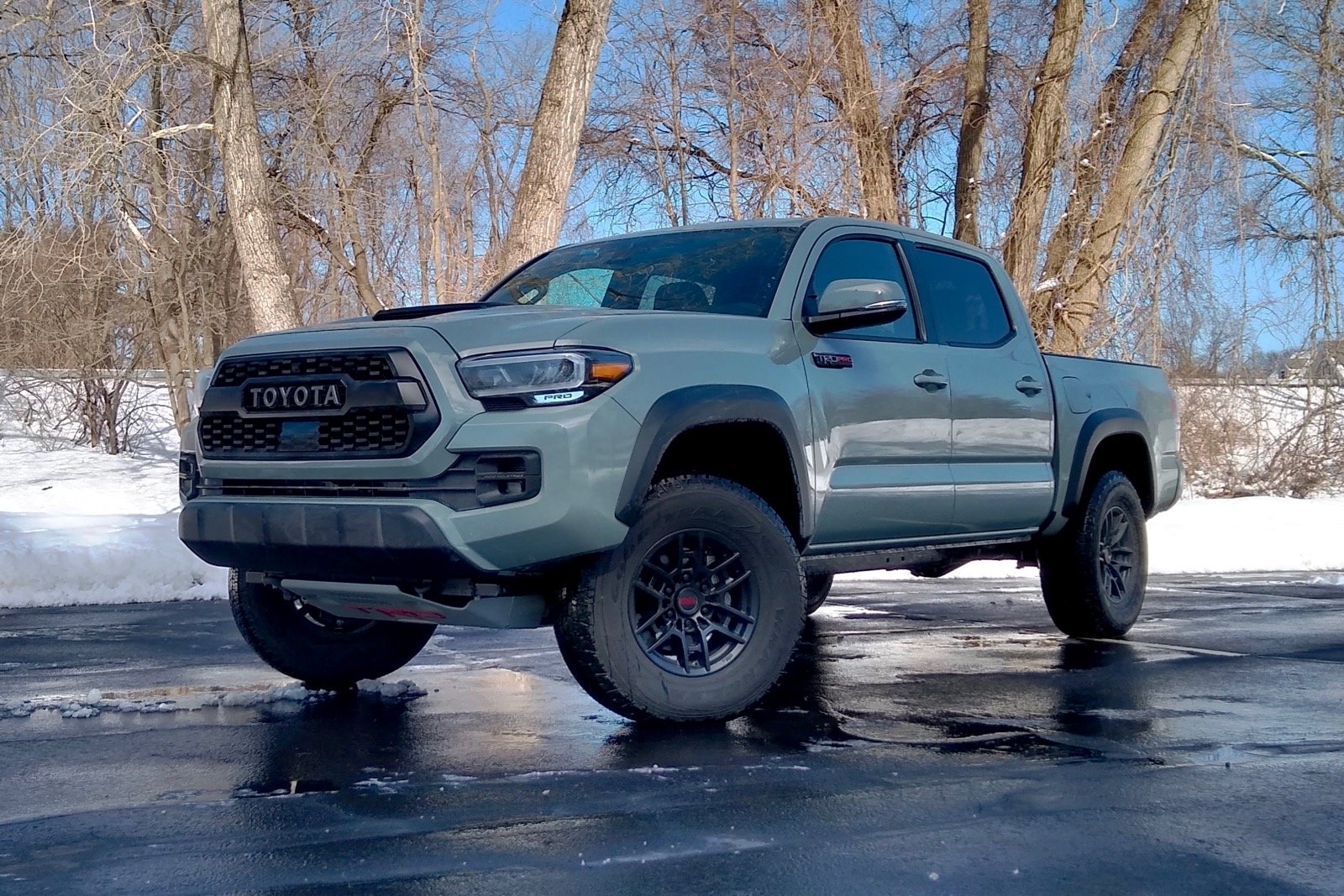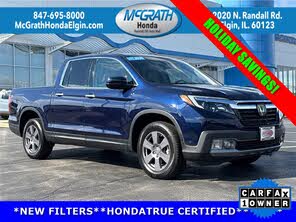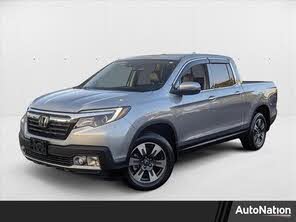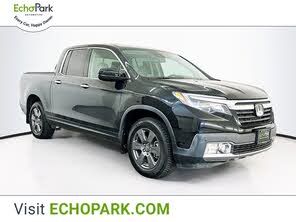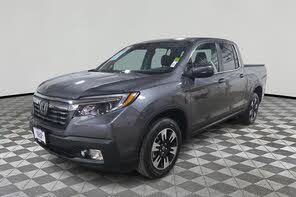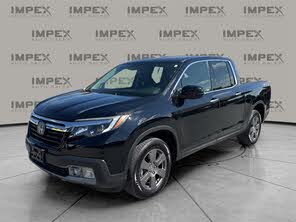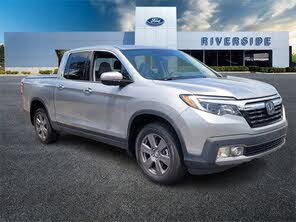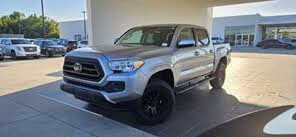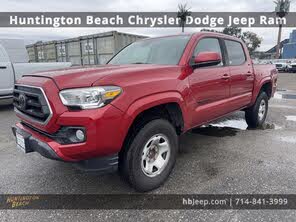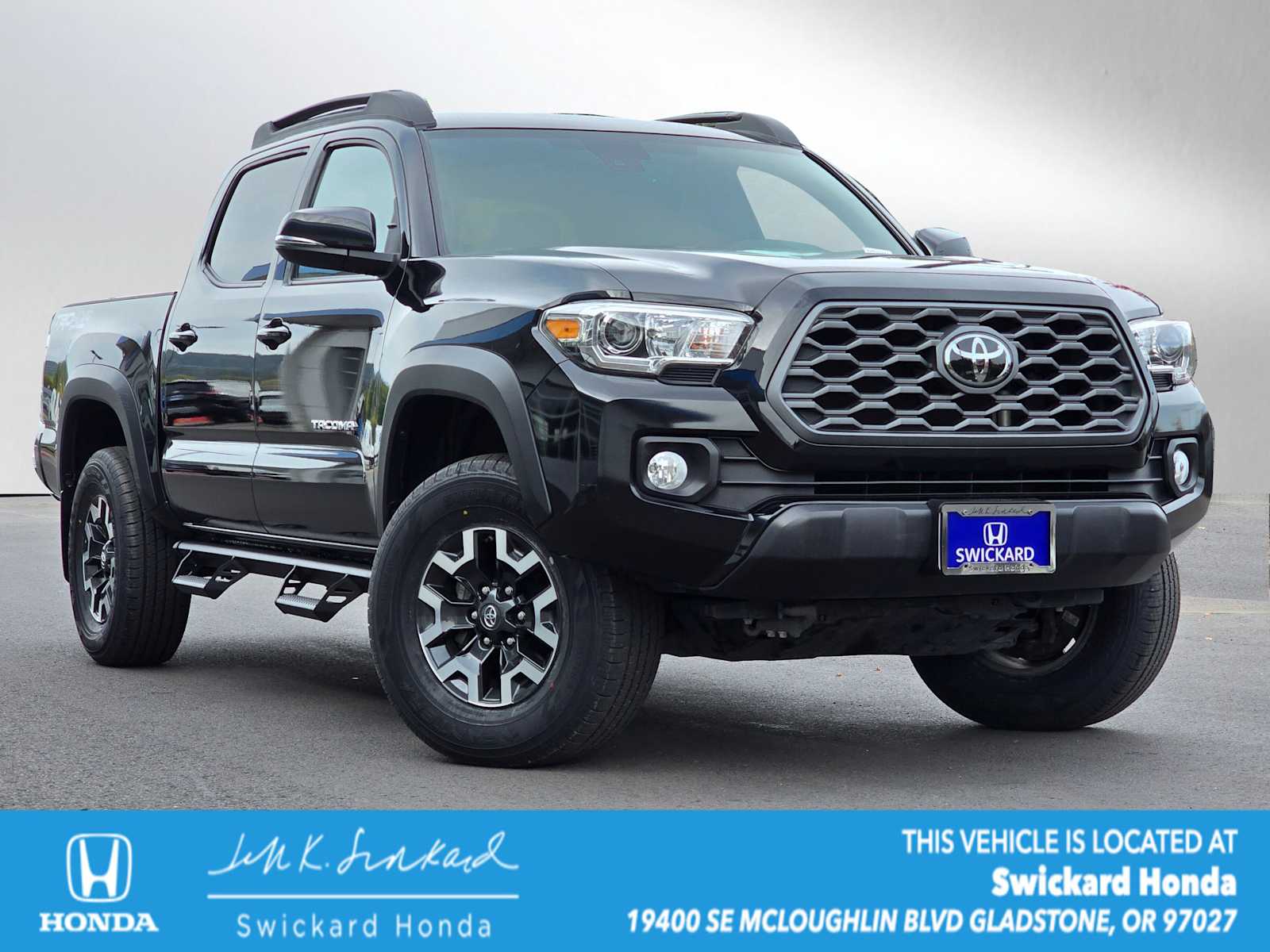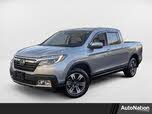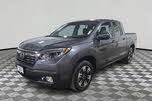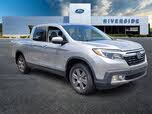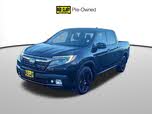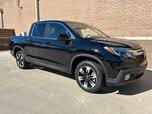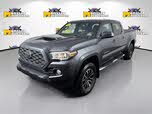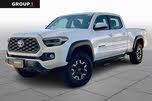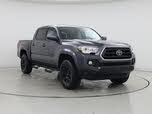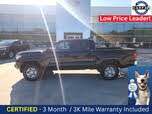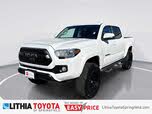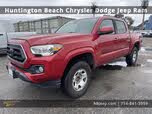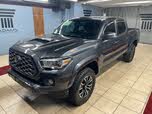2020 Honda Ridgeline vs 2021 Toyota Tacoma
Overview | |
MSRP$33,900 | MSRP$26,400 |
Listings282 | Listings2095 |
Ratings & Reviews | |
User Reviews | User Reviews |
Expert reviews7.3 out of 10 | Expert reviews6.5 out of 10 |
Pros
Cons
| Pros
Cons
|
2020 Honda Ridgeline Reviews SummaryBased on a platform and engineering also used for a minivan and crossover SUVs, the 2020 Honda Ridgeline isn’t your typical pickup truck. True, it does trade maximum towing capacity, payload ratings, and off-road capability for greater comfort and superior driving dynamics, but most of the time, that’s preferable. And because Honda bakes in numerous thoughtful details that make daily driving more pleasing, you might just decide that the Ridgeline offers the right recipe for your needs. | |
2021 Toyota Tacoma Reviews SummaryLast redesigned for the 2016 model year, The Tacoma once dominated midsize-truck sales. In recent years, though, it’s faced stronger competition from the Chevrolet Colorado/GMC Canyon twins, the Ford Ranger, and the Jeep Gladiator. A redesigned Nissan Frontier and heavily-updated Honda Ridgeline are also on the way. Meanwhile, the Tacoma enters the 2021 model year largely unchanged. The only updates are two new special editions—the Nightshade Edition and Trail Special Edition—and standard dual-zone automatic climate control on all V6 models. Pickup truck buyers tend to want choices, and Toyota delivers. The Tacoma is available with four-cylinder and six-cylinder engines, Access Cab and four-door Double Cab body styles, rear-wheel drive (RWD) or four-wheel drive (4WD), and six trim levels— SR, SR5, TRD Off Road, TRD Sport, Limited, and TRD Pro—plus the two special editions. Our test vehicle was a Tacoma TRD Pro Double Cab. The TRD Pro is the most off-road focused of the Tacoma models, so naturally, it gets standard 4WD drive. While Toyota does offer a more comfort-oriented Tacoma Limited model, the TRD Pro is also positioned at the top of the lineup. | |
No video found | |
Popular Features & Specs | |
Engine3.5L 280 hp V6 | Engine2.7L 159 hp I4 |
Drive TrainFWD | Drive Train4X2 |
Seating Capacity5 | Seating Capacity4 |
Horsepower280 hp @ 6000 rpm | Horsepower159 hp @ 5200 rpm |
MPG City19 | MPG City20 |
MPG Highway26 | MPG Highway23 |
Engine | |
Engine Name3.5L 280 hp V6 | Engine Name2.7L 159 hp I4 |
Torque262 lb-ft @ 4700 rpm | Torque180 lb-ft @ 3800 rpm |
Horsepower280 hp @ 6000 rpm | Horsepower159 hp @ 5200 rpm |
DrivetrainFWD | Drivetrain4X2 |
Fuel Economy | |
MPG City19 | MPG City20 |
MPG Highway26 | MPG Highway23 |
Interior | |
Seating Capacity5 | Seating Capacity4 |
Safety | |
Front Crash Overall5 | Front Crash Overall4 |
Side Crash Overall5 | Side Crash Overall5 |
Dimensions & Capacity | |
Bed Length64.0 in | Bed Length73.7 in |
Cargo Space7.3 cu ft | Cargo Space |
Curb Weight4242 lbs | Curb Weight3915 lbs |
Height70.2 in | Height70.6 in |
Length210.0 in | Length212.3 in |
Width78.6 in | Width74.4 in |
Wheelbase125.2 in | Wheelbase127.4 in |
Maximum Payload1465 lbs | Maximum Payload1685 lbs |
Number of doors4 | Number of doors4 |
Maximum Towing Capacity3500 lbs | Maximum Towing Capacity3500 lbs |
Standard Towing Capacity3500 lbs | Standard Towing Capacity |
Overview | ||
MSRP | $33,900 | $26,400 |
Listings | ||
Ratings & Reviews | ||
User reviews | ||
Expert reviews | 7.3 out of 10Read full review | 6.5 out of 10Read full review |
Pros & cons | Pros
Cons
| Pros
Cons
|
Summary | Based on a platform and engineering also used for a minivan and crossover SUVs, the 2020 Honda Ridgeline isn’t your typical pickup truck. True, it does trade maximum towing capacity, payload ratings, and off-road capability for greater comfort and superior driving dynamics, but most of the time, that’s preferable. And because Honda bakes in numerous thoughtful details that make daily driving more pleasing, you might just decide that the Ridgeline offers the right recipe for your needs. | Last redesigned for the 2016 model year, The Tacoma once dominated midsize-truck sales. In recent years, though, it’s faced stronger competition from the Chevrolet Colorado/GMC Canyon twins, the Ford Ranger, and the Jeep Gladiator. A redesigned Nissan Frontier and heavily-updated Honda Ridgeline are also on the way. Meanwhile, the Tacoma enters the 2021 model year largely unchanged. The only updates are two new special editions—the Nightshade Edition and Trail Special Edition—and standard dual-zone automatic climate control on all V6 models. Pickup truck buyers tend to want choices, and Toyota delivers. The Tacoma is available with four-cylinder and six-cylinder engines, Access Cab and four-door Double Cab body styles, rear-wheel drive (RWD) or four-wheel drive (4WD), and six trim levels— SR, SR5, TRD Off Road, TRD Sport, Limited, and TRD Pro—plus the two special editions. Our test vehicle was a Tacoma TRD Pro Double Cab. The TRD Pro is the most off-road focused of the Tacoma models, so naturally, it gets standard 4WD drive. While Toyota does offer a more comfort-oriented Tacoma Limited model, the TRD Pro is also positioned at the top of the lineup. |
Video | No video found | |
Popular Features & Specs | ||
Engine | 3.5L 280 hp V6 | 2.7L 159 hp I4 |
Drive Train | FWD | 4X2 |
Seating Capacity | 5 | 4 |
Horsepower | 280 hp @ 6000 rpm | 159 hp @ 5200 rpm |
MPG City | 19 | 20 |
MPG Highway | 26 | 23 |
Engine | ||
Engine Name | 3.5L 280 hp V6 | 2.7L 159 hp I4 |
Torque | 262 lb-ft @ 4700 rpm | 180 lb-ft @ 3800 rpm |
Horsepower | 280 hp @ 6000 rpm | 159 hp @ 5200 rpm |
Drivetrain | FWD | 4X2 |
Fuel Economy | ||
MPG City | 19 | 20 |
MPG Highway | 26 | 23 |
Interior | ||
Seating Capacity | 5 | 4 |
Safety | ||
Front Crash Overall | 5 | 4 |
Side Crash Overall | 5 | 5 |
Dimensions & Capacity | ||
Bed Length | 64.0 in | 73.7 in |
Cargo Space | 7.3 cu ft | |
Curb Weight | 4242 lbs | 3915 lbs |
Height | 70.2 in | 70.6 in |
Length | 210.0 in | 212.3 in |
Width | 78.6 in | 74.4 in |
Wheelbase | 125.2 in | 127.4 in |
Maximum Payload | 1465 lbs | 1685 lbs |
Number of doors | 4 | 4 |
Maximum Towing Capacity | 3500 lbs | 3500 lbs |
Standard Towing Capacity | 3500 lbs | |
The 2020 Honda Ridgeline presented a unique design that seemed to blend the front of a minivan with the rear of a pickup truck, a combination that even caught the attention of a 12-year-old. This design choice suggested a potential image issue for Honda, as trucks are traditionally expected to appear rugged and tough. The Ridgeline's second-generation model had shifted too far from its original, albeit unusual, design. Despite this, the 2020 model introduced several updates, including a new nine-speed automatic transmission, standard Honda Sensing ADAS, and an upgraded infotainment system with an 8.0-inch touchscreen, Apple CarPlay, and Android Auto. The lineup was simplified to four trims, with the RTL-E trim tested priced at $43,140. The interior, featuring high-quality materials, was reminiscent of the Honda Pilot, offering a comfortable and refined experience.
In contrast, the 2021 Toyota Tacoma embodied the quintessential truck design with its boxy fender flares, tall hood, and shield-like grille, providing a stark contrast to more streamlined competitors. The Tacoma offered unique styling features across its models, such as the Trail Edition and Nightshade Edition, while the TRD Pro boasted exclusive elements like a model-specific grille and Lunar Rock color. The Tacoma maintained a body-on-frame construction, enhancing its towing and off-road capabilities. Interior space was limited, particularly in the Double Cab, which had the least headroom and legroom in its segment. Despite this, the Tacoma offered practical features like a rail system with tie-down cleats and a 120-volt outlet in the bed.










The 2020 Honda Ridgeline was powered by a 3.5-liter V6 engine, delivering 280 horsepower at 6,000 rpm and 262 pound-feet of torque at 4,700 rpm. This engine was paired with a nine-speed automatic transmission, which had undergone improvements for better shift quality. The Ridgeline featured electronic transmission controls and paddle shifters, though the latter were rarely used outside of towing scenarios. Front-wheel drive was standard on Sport and RTL trims, with optional all-wheel drive, while RTL-E and Black Edition trims came with standard all-wheel drive. The i-VTM4 system allowed for impressive power distribution, enhancing both off-road capability and on-road driving enjoyment. The Ridgeline offered Eco, Normal, and Sport modes, along with Snow, Mud, and Sand driving modes, making it versatile for various terrains. It achieved a combined fuel economy of 21 mpg, with a towing capacity of up to 5,000 pounds and a maximum payload of 1,580 pounds.
The 2021 Toyota Tacoma offered two engine options: a 2.7-liter four-cylinder with 159 horsepower and 180 pound-feet of torque, and an optional 3.5-liter V6 producing 278 horsepower and 265 pound-feet of torque. The V6 could be paired with either a six-speed automatic or manual transmission. The Tacoma's part-time 4WD system included a low range and an electronic rear limited-slip differential. The TRD models enhanced off-road capabilities with features like Bilstein shocks, Multi-Terrain Select drive modes, and Crawl Control. The TRD Pro added Fox shocks, a front lift, and reinforced tires. On-road performance was traditional, with less emphasis on car-like handling. The Tacoma's towing capacity reached 6,800 pounds, while its maximum payload was 1,685 pounds, though these figures varied based on configuration.
The 2020 Honda Ridgeline offered the comfort and utility of a Honda Pilot, with a 33.9 cubic-foot cargo bed replacing the third-row seat. The front seats were comfortable, with heated options in all but the Sport trim, and the driver's seat featured 10-way power adjustment. Rear legroom was limited, but the seats were comfortable, and the climate system effectively managed temperature changes. The Ridgeline excelled in in-cab storage, with ample space and a locking in-bed trunk with a drain plug. The tailgate could drop traditionally or swing to the side, and a power outlet and truck-bed audio system enhanced its functionality.
The 2021 Toyota Tacoma's Double Cab struggled with interior space, offering the least headroom and legroom in its class. The cabin felt confined, with limited visibility due to the tall hood and short glass. Rear seats folded for storage, but overall in-cab storage was limited. The Tacoma lacked innovative in-bed storage solutions but included a rail system with tie-down cleats and an available 120-volt outlet. The bed was made from a lightweight composite material, providing durability without rust concerns.
The 2020 Honda Ridgeline featured an 8.0-inch touchscreen Display Audio system, lacking physical knobs and buttons. Voice recognition was limited, requiring specific prompts. Steering wheel controls were essential for volume and tuning, while Apple CarPlay and Android Auto offered smartphone integration. Higher trims added features like SiriusXM, HD Radio, navigation, and a premium sound system, though user experience issues persisted.
The 2021 Toyota Tacoma's base SR trim had a 7-inch touchscreen, while other models featured an 8-inch display. Standard features included Apple CarPlay, Android Auto, Amazon Alexa, Bluetooth, and SiriusXM. The infotainment system was functional, with responsive touchscreens and steering wheel buttons, but lacked advanced features. The TRD Pro model included a Multi-Terrain Monitor, useful for off-road and parking scenarios.
The 2020 Honda Ridgeline came standard with Honda Sensing, offering adaptive cruise control, forward-collision warning, automatic emergency braking, lane-departure warning, and lane-keep assist. Higher trims added automatic high beams, blind-spot warning, and rear cross-traffic warning. The Ridgeline received top crash-test ratings from the IIHS, except for an "acceptable" score in the small overlap frontal test for the front passenger. The NHTSA awarded it five stars overall, with a four-star rollover rating.
The 2021 Toyota Tacoma received top "Good" scores from the IIHS, except for an "Acceptable" rating in the passenger-side small overlap front test. Headlight ratings varied, but front-crash prevention was rated "Superior." The NHTSA gave the Tacoma a four-star overall rating, with four stars in frontal and rollover tests, and five stars in side tests. Standard safety features included forward-collision warning, automatic emergency braking, lane-departure warning, automatic high beams, and adaptive cruise control.
CarGurus highlights

According to CarGurus experts, the overall rating for the 2020 Honda Ridgeline is 7.3 out of 10, while the 2021 Toyota Tacoma scores 6.5 out of 10. Based on these ratings, the 2020 Honda Ridgeline is the recommended choice, offering a more comfortable and versatile driving experience with innovative features and better overall ratings.
Choose the 2020 Honda Ridgeline if:
- You prioritize a comfortable and refined interior with high-quality materials.
- You value versatile driving modes and a smooth on-road experience.
- You need innovative storage solutions, including a locking in-bed trunk.
Choose the 2021 Toyota Tacoma if:
- You prefer a traditional truck design with rugged styling.
- You require strong off-road capabilities with specialized TRD models.
- You need a higher towing capacity for specific configurations.
CarGurus highlights

According to CarGurus experts, the overall rating for the 2020 Honda Ridgeline is 7.3 out of 10, while the 2021 Toyota Tacoma scores 6.5 out of 10. Based on these ratings, the 2020 Honda Ridgeline is the recommended choice, offering a more comfortable and versatile driving experience with innovative features and better overall ratings.
Choose the 2020 Honda Ridgeline if:
Shop Now- You prioritize a comfortable and refined interior with high-quality materials.
- You value versatile driving modes and a smooth on-road experience.
- You need innovative storage solutions, including a locking in-bed trunk.
Choose the 2021 Toyota Tacoma if:
Shop Now- You prefer a traditional truck design with rugged styling.
- You require strong off-road capabilities with specialized TRD models.
- You need a higher towing capacity for specific configurations.

By: CarGurus + AI
At CarGurus, our team of experienced automotive writers remain at the heart of our content operation, conducting hands-on car tests and writing insightful guides that are backed by years of industry experience. To complement this, we are harnessing AI to make our content offering more diverse and more helpful to shoppers than ever. To achieve this, our AI systems are based exclusively on CarGurus content, ratings and data, so that what we produce is both unique to CarGurus, and uniquely helpful to car shoppers.
